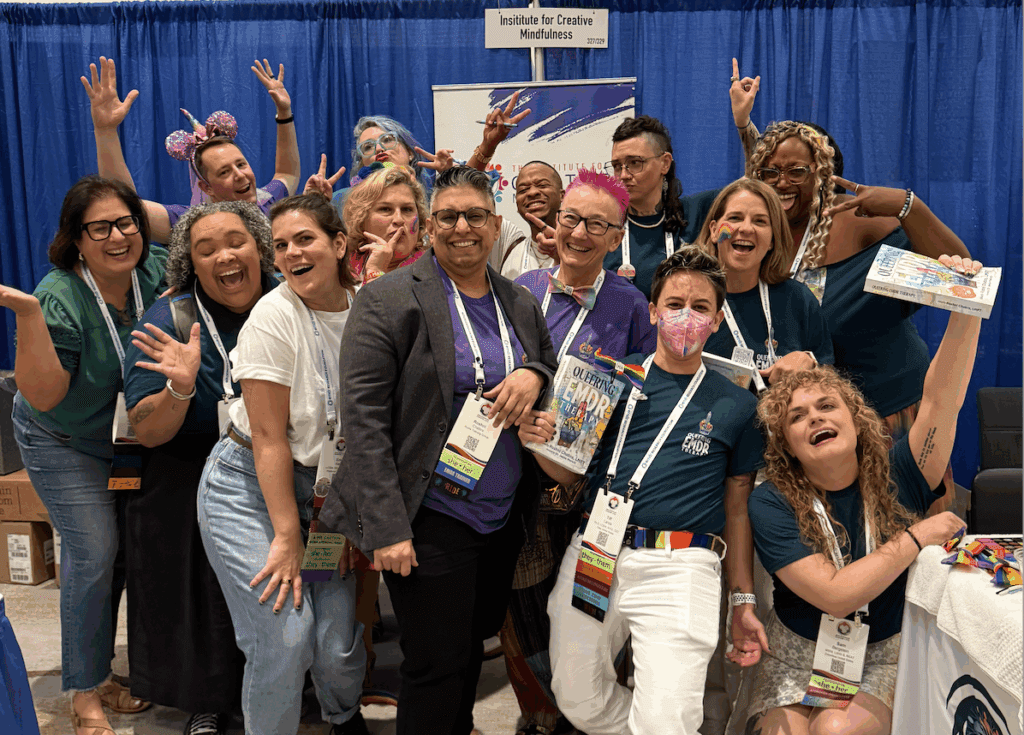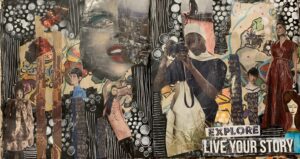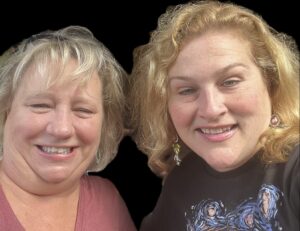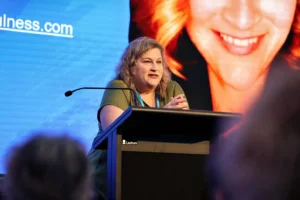Tears filled my eyes when I took to the podium for my presentation at the EMDR International Association (EMDRIA) Annual Conference on Sunday, September 14 in Anaheim, California. Six years ago, in this same city, I mounted a similar stage to give a talk where I formally came out to the EMDR community about my mental health history of being diagnosed with a dissociative disorder in 2004. And growing up as an EMDR therapist while navigating it all. When Susan Brown introduced me at that conference, she referred to the presentation as revolutionary and groundbreaking.
While I was honored by her words, it still baffled me that an established professional being candid about their lived experience with anything, even dissociation, would be seen as revolutionary. One member of the establishment challenged what I was doing from the daunting “questions microphone” at EMDRIA. Yet after that presentation, many other professionals came up to me offering solidarity. I also received scores of emails in support afterwards. Many people thanked me for “coming out,” especially when they related so much but did not feel safe enough to be as vulnerable publicly.
At this 2025 Conference, where the theme was Changing Lives and the keynote presentations largely focused on academic, empirical research, I had the privilege of sharing the teaching film Petals of a Rose (POAR). As usual, I relished being the artistic voice, advocating for lived experience and methods of inquiry that are more humanities-based as equally valid and certainly more nuanced than what the numbers-based hard science offers. POAR is a work of art created by my friends Dylan and Holly Crumpler that is largely heralded by the community of people with dissociative identities as the most accurate portrayal of navigating life with dissociative identities.
My tears signified a gratitude that the EMDRIA community, a place that has brought me great joy and great pain over the years, honored me with some platform to present these perspectives. The tears also fell with a sense of wonder for how much has happened in the last six years. Many people have since credited my coming out with their ability to come out and speak their truth. And to receive so much appreciation at this conference for my 2023 book Dissociation Made Simple: A Stigma-Free Guide to Embracing Your Dissociative Mind and Navigating Daily Life by both conference attendees and conference attendees sharing kind words with me on behalf of their clients…it confirmed that we did the right things speaking out in honesty all of those years ago.
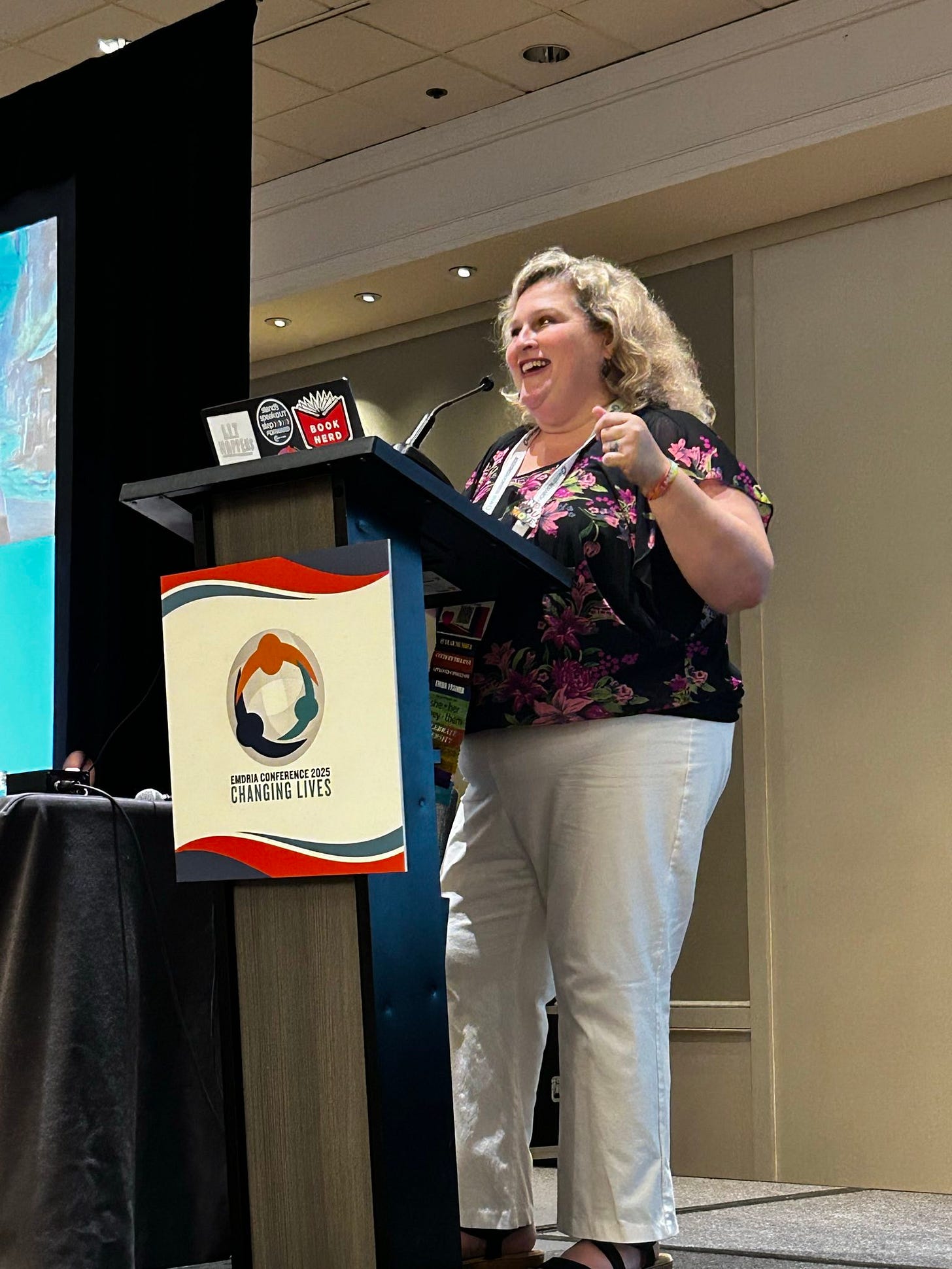
And it reminded me that there is still much farther to go in speaking up, especially when it can feel like an unpopular thing to do.
The most significant lane of my concern remains what we, as EMDR therapists and as helping professionals in general, privilege as legitimate sources of knowledge. As I’ve written many times before, I am not opposed to science and to empirical research. Especially in this unprecedented era in the United States where the role of science in medicine is under attack, it is important to state that I applaud what any empirical researchers are doing, especially in medicine. As Huston Smith, the great theological writer and author of The World’s Religions articulated, the problem is not with science, it’s with scientism. Scientism is this tendency to privilege what can be measured above all else and not be open to the mystery (which is relevant in spiritual studies). For me, as it applies to therapy, the problem is privileging the science above the art. Psychotherapy is an art and a science, and for many of us, it is much more of an artform than a scientific endeavor.
After the 2019 Anaheim conference I also wrote a piece about what it is like to exist as an artist and a qualitative researcher within the EMDR community. You can check it out HERE if you want even more context. At this year’s conference in Anaheim, another major insight shimmered for me as people came up to my company’s table in the exhibit hall, a table that featured most of the 15 books I’ve written being on sale.
“How have you written so many books?,” people asked.
“Well, overworking can be a trauma response,” I’d answer, only half jokingly 😉
Yet with one visitor I reflected, in all seriousness, my work as a qualitative researcher in EMDR therapy never felt quite valued in our community. So I decided to channel my energies into writing books that would be valuable for clinicians and ordinary people. In a 2019 qualitative literature review by Whitehouse, three of the five papers that he identified as being the most methodologically sound in EMDR therapy were my papers. Even before that, in credit to EMDRIA, they honored the pilot study for my doctoral dissertation with the first place poster research award when they still gave out that prize at the conference, based on the soundness of my methodology. I offer these credentials in qualitative research not to brag; only to say that I know what I’m doing and I could spend more of my energies in the academic realm. Yet, the feeling I’ve largely received from the EMDR community has been one of, “Oh, you do qualitative research. That’s nice, but what does it really prove? Especially to the haters of EMDR in the medical establishment.”
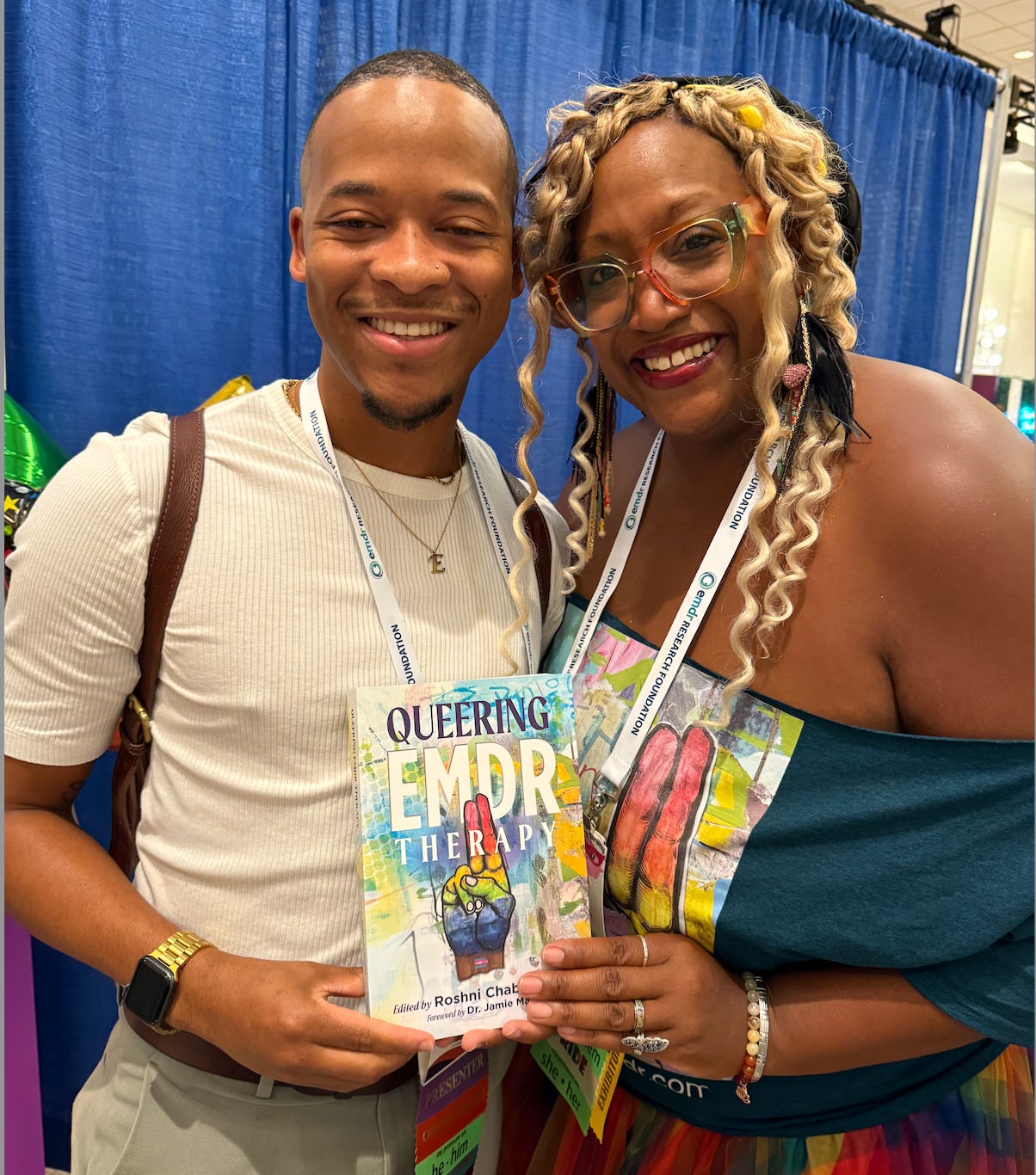
I guess writing so many books has been my way of saying that the voices of lived experience and the artistic methods of inquiry matter too.
This motivation facilitated the greatest sources of pride in my career, which we celebrated at the 2025 EMDRIA conference: publishing and producing Queering EMDR Therapy, the brain child of my friend and colleague Roshni Chabra. When Roshni came to me just over two years ago with the idea for Queering EMDR Therapy, asking me to collaborate in some way, I told her that not only did I want to be involved; I wanted to publish it through my small yet mighty company Creative Mindfulness Media. Years ago I made myself the promise that I would work with publishers when it felt like a good collaboration, and I have worked with five separate book publishers over the years. Yet if I felt that a publisher would miss the point of what I was trying to do on any creation, I would produce it myself. That resolve birthed Creative Mindfulness Media, which has put out two books that were later picked up by publishers Trauma and the 12 Steps, both the main book and the workbook, and the expressive arts compendium Process Not Perfection: Expressive Arts Solutions in Trauma Recovery. I did not want to risk that any publisher out there who would take a chance on a niche EMDR book would turn it into an academic, scientific endeavor that would be cost prohibitive for ordinary clinicians to purchase. Above all, I wanted the lived experience voices to shine.
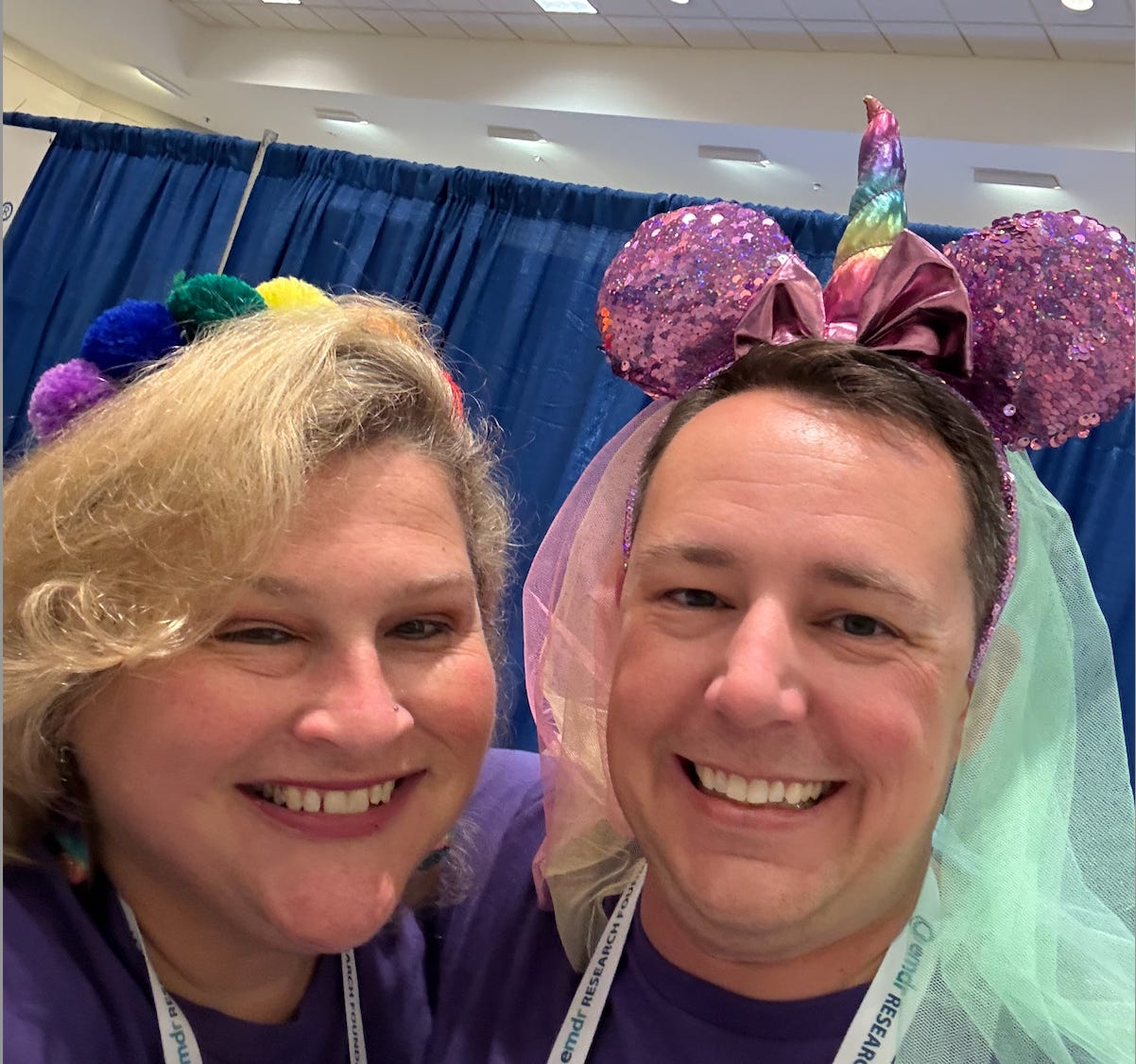
Queering EMDR Therapy is a collection of 26 lived experience voices sharing essays, artwork, poetry, narrative reflections, and mixed format pieces. All of the contributors are EMDR therapists themselves who have a lot to say about the gifts that EMDR therapy has brought them; and about the concerns that they have with the EMDR community not being an optimally welcoming and validating place. It is a collection celebrating both how far we’ve come and articulating how much farther we have to go.
In the book, the operational definition for queering that we use comes from scholar Dr. Nick Walker. Walker asserts that “intentionally liberating oneself from the culturally ingrained and enforced performance of heteronormativity is sometimes referred to as queering, intentionally liberating oneself from the culturally ingrained and enforced performance of neuronormativity can be thought of as neuroqueering” (Walker, 2021, p. 155).
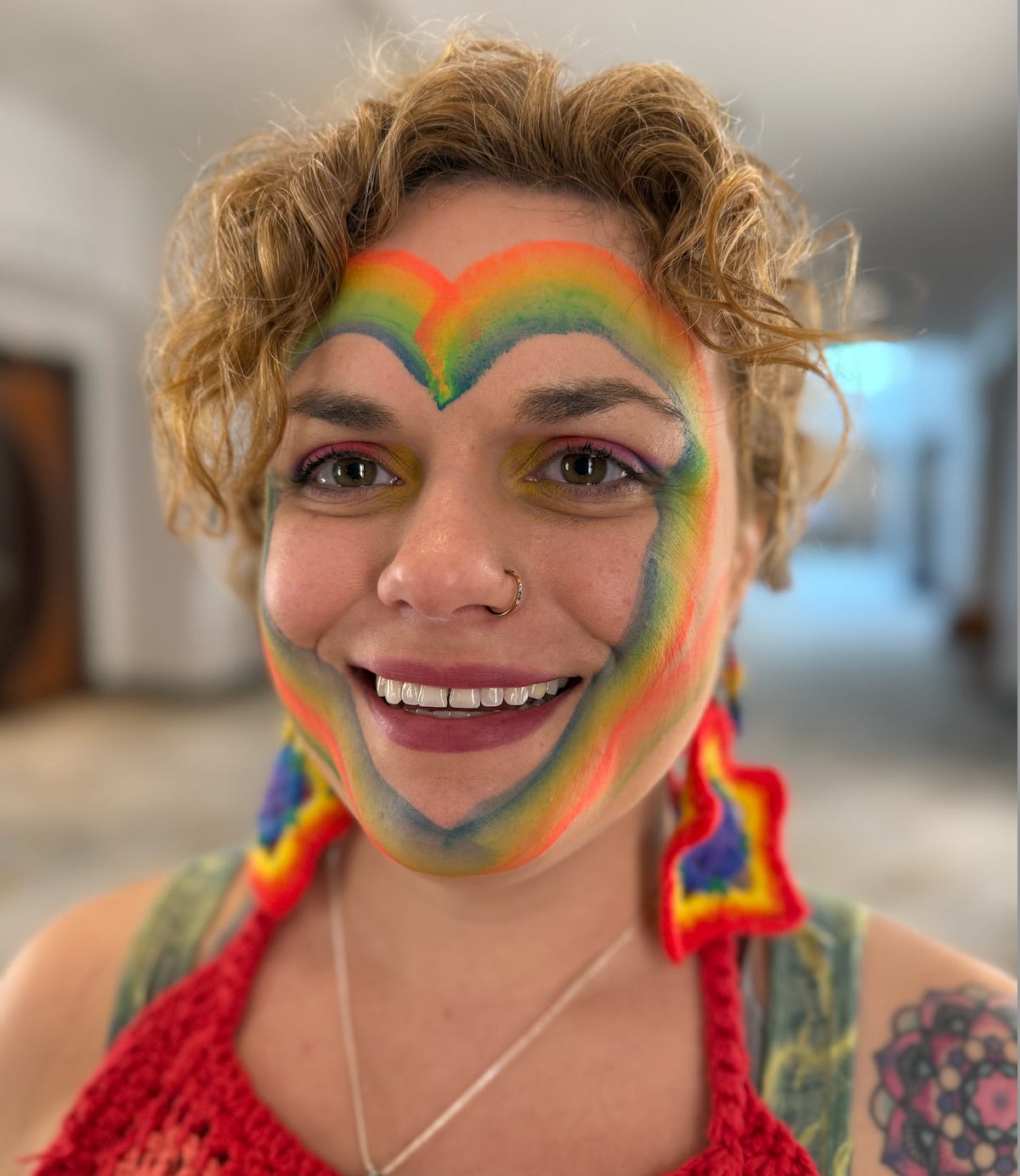
A conference highlight for me is that 14 of the 26 contributors were physically present in Anaheim. We celebrated our queer joy with vigor (see some of the pictures that I offer along with this blog for just a small glimpse), even at a conference that might not fully understand or appreciate what we are trying to do as humans endeavoring to queer EMDR Therapy. In addition to our folks presenting sessions, we walked around the conference clad in attire that represented our authentic selves. We sang. We danced. We laughed. We group-hugged. We cuddled. We face-painted. We played Dungeons & Dragons when the conference was officially over. We had an unapologetically queer experience for the people who were present and needed to connect to it. And in keeping with the conference theme, we hopefully changed lives.
The impact is impossible to measure empirically.
References
Walker, C. (2021). Neuroqueer Heresies. Autonomous Press.
Whitehouse, J. (2019). What do clients say about their experiences of EMDR in the research literature? A systematic review and thematic synthesis of qualitative papers. European Journal of Trauma and Dissociation. DOI: 10.1016/j.ejtd.2019.03.002

